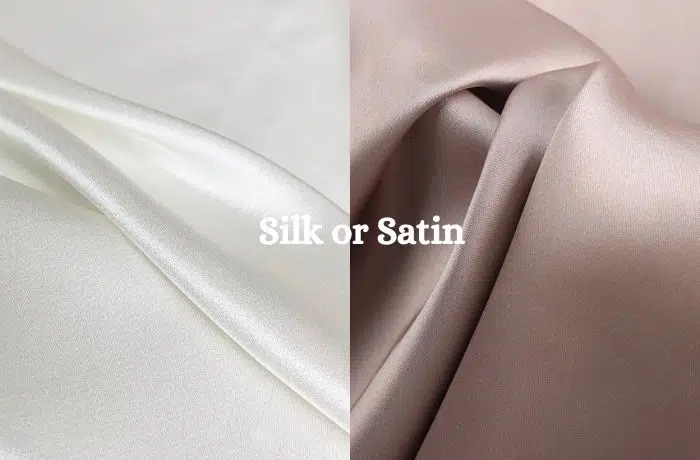The question of “satin vs silk for hair?” is one that many hair care enthusiasts ponder when looking to improve the health and appearance of their locks.
Both materials provide smooth, luxurious surfaces, but each has its unique benefits and trade-offs.
When it comes to hair health, both silk and satin are excellent choices for reducing hair breakage, minimizing frizz, and preserving moisture.
However, understanding the differences between the two is crucial in deciding which material will best suit your specific hair care needs.

Table of Contents
Satin vs Silk for Hair: What Is Better for Your Hair Silk or Satin? – Silk: The Gold Standard for Hair Care
Silk is widely regarded as one of the best materials for hair care, especially when it comes to preventing damage while you sleep.
This is due to its unique properties that set it apart from other fabrics.
Silk is a natural fiber made from the larvae of silkworms, which results in a fabric that is soft, smooth, and non-absorbent.
Unlike cotton or other common pillowcase materials, silk doesn’t absorb moisture from your hair, meaning it helps maintain your hair’s natural oils, preventing it from becoming dry or brittle.
This is particularly beneficial for people with curly, textured, or dry hair, as maintaining moisture is essential for keeping hair healthy and shiny.
Moreover, the smoothness of silk prevents friction as you toss and turn at night.
This reduction in friction minimizes hair breakage, split ends, and the formation of tangles.
It also reduces frizz by allowing hair to glide easily across the surface of the pillow.
Since silk doesn’t trap heat or sweat, it can also help reduce the buildup of oils and dirt in your hair, keeping it cleaner and fresher for longer.
For those willing to invest in high-quality silk, options like Slip Silk Pillowcase are highly recommended.
These pillowcases are made from 100% pure mulberry silk, which is considered the finest type of silk available.
Mulberry silk is not only soft and smooth but also hypoallergenic, which makes it a great option for people with sensitive skin or allergies.
Another excellent choice is the Fishers Finery Silk Pillowcase, known for its high-quality construction and long-lasting durability.
Though silk pillowcases tend to be more expensive than their satin counterparts, they are often considered worth the investment due to their superior benefits for hair and skin.
Is Satin or Silk Better for Hair?/Difference Between Silk and Satin for Hair/Satin or Silk for Hair: Satin: A Budget-Friendly Alternative
While silk is the premium choice for many, satin offers a more affordable alternative without compromising much on the benefits. The main distinction between silk and satin lies in the weaving process rather than the material itself.
Satin is a type of weave that produces a shiny, glossy surface and can be made from various fibers, including polyester, rayon, and even silk. This means that satin pillowcases are often made from synthetic fibers, which tend to be more durable and less expensive than silk.
The smooth surface of satin still provides many of the same benefits for your hair as silk, such as reducing friction, preventing tangling, and minimizing hair breakage. Satin helps preserve moisture in your hair, and it can also keep your hair looking shiny and healthy, much like silk does.
However, satin pillowcases made from synthetic fibers may not offer the same breathability or moisture retention as their silk counterparts. While satin does provide a smooth surface for your hair to glide on, it may not be as effective at preventing dryness or protecting hair from heat damage in the same way that natural silk does.
Photo credits: SinoSilk